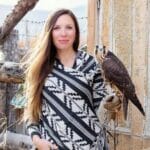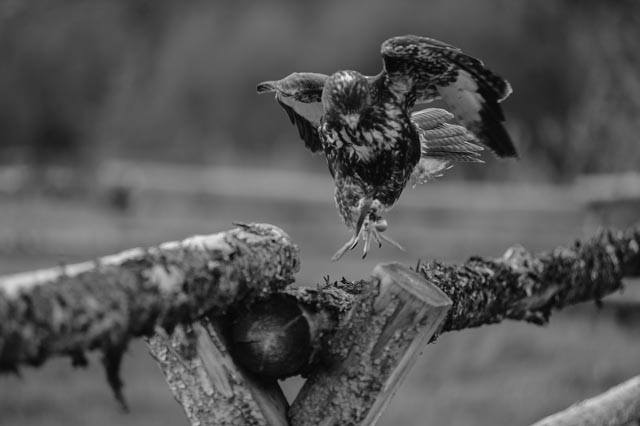By Shauna Stephenson
If I’m in the presence of other humans – which, working from home, I rarely am – and we’ve been drinking (which, with two young children, is always a tempting way to solve one’s problems but as most moms can attest, that glass of wine isn’t nearly as nice when someone is screaming “mommy the dog ate my underpants!”), I sometimes tell them I am a falconer.
And if we are in that rare occasion of being grown adults in the same room and have had that lovely glass of wine or two or three, the first question they always ask is “How do you get one?”
“Good question,” I say.
Falconry has long had the distinction of being the sport of Kings. Even today its reputation, if you want to call it that, leans toward the uber-rich – picture National Geographic photos of Middle Eastern royalty holding up well-bred birds that cost more than my house.
But if you’re like me – somewhat broke and American – you’ll have to hatch a more-clever plan.
If you want to call it that.
Most apprentices start with a redtail hawk. Redtails are notoriously sturdy, forgiving and when treated with care, easy to train. After a year or so of hunting, they are often released back into the wild to join the breeding population.
While there are many ways to trap a hawk, one common way is to use a Bal-chatri trap. One can buy this kind of trap on specialty sites now, but to make one you only need a sturdy base, some woven wire, dozens of well tied slip knots and a hamster.
Yes, a hamster.
Turns out, each sport has its own dirty little secrets. For fishing it’s subjective. Bits of feather and glitter disgust the bait angler while the purist disdains the fluorescence of egg-shaped beads.
For falconry, the secret comes with brightly colored exercise wheels.
I made this mistake when I was first starting out, showing up to go trapping with my sponsor with a few live rats in a box.
“I said hamsters,” he said.
“Hamsters were $15 apiece!” I said.
“So you spent all that time and effort to get your license and now you want to save $7 bucks?”
“They were on sale,” I said.
The thing is mice and rats have the God-given sense to freeze when they spot a predator. They’re savvy, cunning, the street-smart cousin to the naïve, pet-store gerbil. Hamsters, on the other hand, are oblivious, daftly waddling along in their temporary digs, taunting the predator above as though nothing were amiss. This makes them the perfect prey to drive a greedy redtail to drop off its perch to investigate what is in the trap.
Here’s how it happens: Driver or passenger spots a hawk on a telephone pole down the road. Driver drives the vehicle as though nothing is suspicious (because there’s definitely nothing suspicious about traveling with a hamster riding shotgun). Driver slows to a reasonable speed that is slow enough but not too slow to spook the bird as passenger either rolls down the window or quietly opens the door. Passenger then sets the trap gently in the ditch where said hawk can see it.
After a while it can feel so normal, this driving around with a hamster in a trap, looking for hawks. Once, in a bout of absentmindedness, I forgot I had the critter riding on my center console as I pulled through the drive through of a coffee hut.
Hammie The Third politely scaled the wire mesh, picking at slip knots as the barista delivered my cappuccino – not too dry, not too wet. She looked at the hamster and to her credit, said nothing, which kind of makes you wonder what else she sees out that window.
But I digress.
After placing the trap, driver pulls back to the road and continues driving as though passenger definitely did NOT just drop a hamster in a medieval looking trap out their window into the borrow ditch. Driver pulls a u-turn and then driver and passenger surreptitiously watch the trap from a half mile down the road, pretending like they are definitely NOT watching a hamster in a trap in a borrow ditch.
Binoculars are used sparingly. Hawks have excellent vision and binoculars appear like giant predator eyes. Even from a half mile away they can spook a bird.
As it happens, neighbors also have excellent vision and spread rumors that you need to be committed. Best to be sneaky.
In the short time I have been trapping, I have often been alone. The good part about trapping around here is when people see a woman pulled off to the side of the road, gazing at telephone poles through binoculars, they usually just think she is lost. Put a man in the vehicle and suddenly you are terrorists, burglars or poachers and everyone is giving you the stink-eye. I don’t know what that says about this part of the world, but I suspect it might be better not to think about it too hard.
If you’re lucky, and your hamster has behaved and done its best impression of a side dish, a hawk will drop on your trap, get tangled in the slip knots and you will be off and running on an adventure you can hardly believe.
This is what I love about American falconry: Raised to believe we can be whatever we want with work and ingenuity, we truly think we can call birds from the sky with a bit of wire and duct tape. No royal blood or bags of money required.
It was on one of these truly American outings that I came to know Ollie, a male juvenile redtail. My first bird and first jump into an emotional deep end — a pool I was almost certainly not prepared for.
In the end, it would drown us both. Months later we would both lay silent in old blankets on the ground of an unkempt bedroom, shells of ourselves as his life ended and mine began again.
But that was yet to come. The vehicle slowed, the door opened, the trap was dropped, and driver and passenger kept heads down as we continued to drive past, careful not to spook the bird.
In the rearview mirror I saw the small Redtail take flight from the fence toward the trap. He buzzed the cattails in the ditch and landed on wire mesh, peering at the oblivious hamster. Taking a step into the slip knots he caught a foot and suddently everything around felt gilded, rich and royal.
Shauna Stephenson is the national communications director and lives in Montana. Keep an eye out for future installments in this series.
Also in this series:



